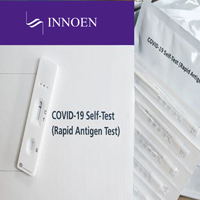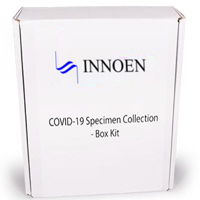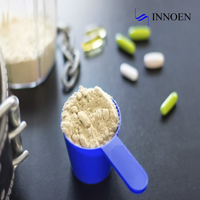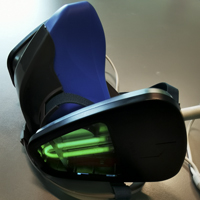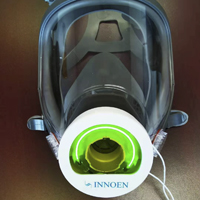A filter mask under the most ideal condition will lose its quarantine function after a certain period of usage in a high infected region. Continue use of this saturation mask will make the user inhale more viruses than without using a mask. This can be defined as the Saturation Secondary Infection. We can use E. coli sprays to get this curve for a type of routine masks.
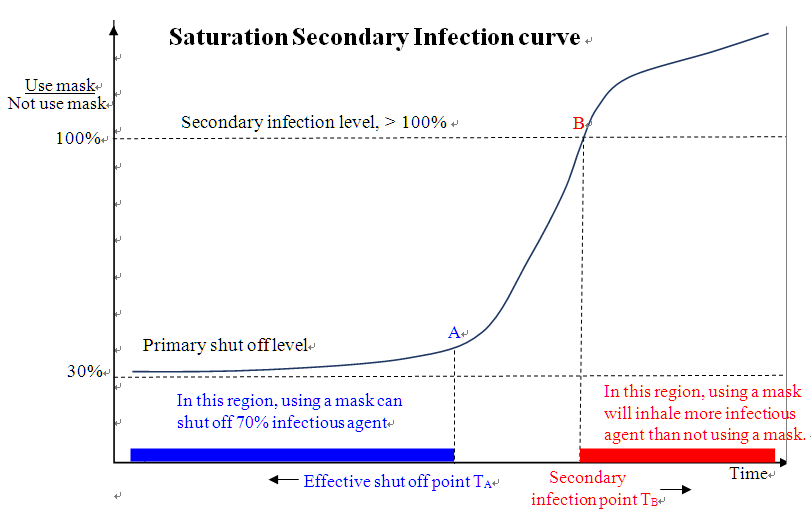
The curve in the figure is got from E. coli spray to simulate the performance of a mask for the infectious agent. It can be adaptable to all infectious agents. (Method: fixed a 10×17cm routine mask on one end of an 8×8×30 cm sampling square tube, at another end fix a 3000ml piston air pump with 12 cycle/min speed to simulate the human respiration, UV germicidal lamp to sterilize the system before each test. In the middle of the tube, there is a window that can put in and take out a 7cm petri dish for sampling. Spray 106E. coli follow the piston air pump cycle before the fixed mask and use Petri dishes to sample inside the tube, viable colony counting as calculation.) The abscissa is a ratio with the concentration before and after a mask, and the ordinate is the time. At the start, using a mask can shut off 70% of the infectious agent; we call it the effective time point TA. For the primary shut off level, different products could have different shut off level. However, after point A, the infectious agent which can pass the mask quickly increase; while reaches point B, using of the mask will even get more infectious agent than not using a mask, we call it saturation secondary infection state. Depend on the concentration of the infectious agent in the air (the distance of spraying tip to the fixed mask in the experiment), effective TA ranges from 20min to 3 hr. Note, this is only an ideal condition in which masks are fixed well on the sampling tube. In the real-world, a mask is impossible to fix on a human face so tight, naked skin contact region possibly leaks most of the infectious agents.
This saturation secondary infection not only adapts to masks, but even social distancing also fits for this curve. We change the time in abscissa into “infectious source staying time”, then get a similar pattern. After the saturation secondary infection point, using of social distancing will inhale more viruses than not use it. For conventional quarantine hospitals, we change the time in abscissa into “the number of infectious patients”, then a similar pattern presents again. Using a quarantine hospital will inhale more viruses than not use the hospital if the number of infected patients in the hospital over a threshold.


